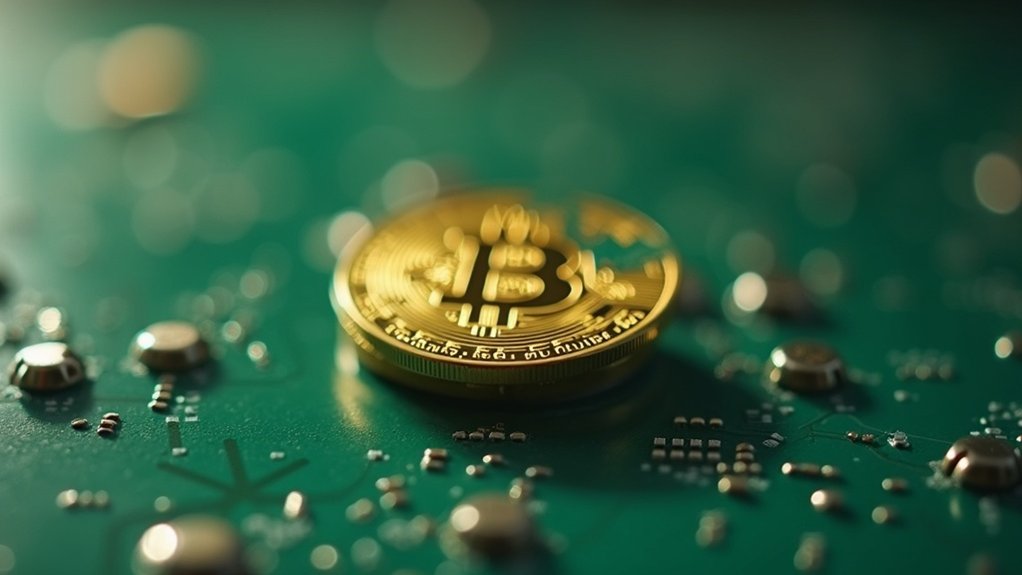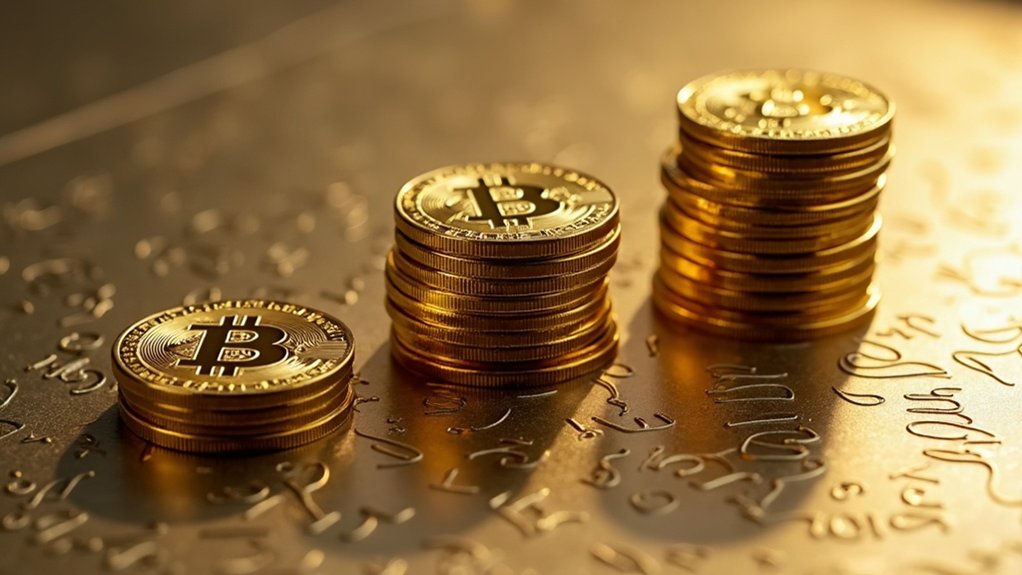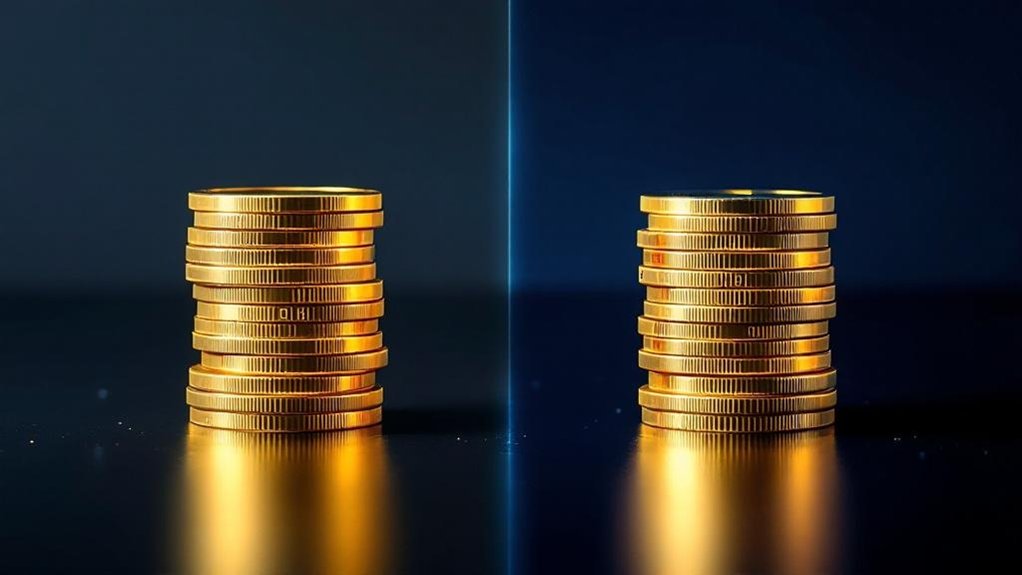Buying satoshis is surprisingly simple. These tiny Bitcoin fractions (0.00000001 BTC each) are available through cryptocurrency exchanges like Coinbase or Kraken. Create an account, verify your identity, deposit cash, and purchase. Minimum buys hover around $2. Once acquired, move satoshis to a private wallet—hardware options offer best security. Watch those fees though; they hit small purchases harder percentage-wise. The beauty? You don’t need a whole Bitcoin to join the crypto revolution.
Many investors looking to enter the cryptocurrency market don’t realize they don’t need thousands of dollars to own Bitcoin. The smallest unit of Bitcoin, called a satoshi, equals just 0.00000001 BTC. That’s one hundred millionth of a single Bitcoin. Named after the mysterious creator Satoshi Nakamoto, these tiny units make Bitcoin accessible to everyone. Seriously, everyone.
Getting your hands on some satoshis is straightforward. Cryptocurrency exchanges like Coinbase and Kraken sell them. Bitcoin ATMs work too. So do peer-to-peer platforms. Most exchanges have minimum purchase requirements—usually around $2. Not exactly breaking the bank.
The process? Choose a reputable exchange. Create an account. Verify your identity if they ask. Deposit some cash. Buy your satoshis. Done. Bank wire transfers offer a secure way to fund your account with larger amounts.
After purchasing, don’t leave your satoshis sitting on the exchange. Bad idea. Exchanges get hacked. Transfer them to a private cryptocurrency wallet instead. Options include hardware wallets, software wallets, mobile wallets, and web wallets. Hardware wallets offer the best security. Not cheap, but your satoshis deserve protection. Regular monitoring of your wallet’s security status is essential for long-term investment safety.
Fees matter when buying tiny amounts. Network fees depend on blockchain congestion. Exchanges charge trading fees too. Small purchases get hit harder by fees, percentage-wise. Some platforms have fee calculators. Use them.
Why bother with satoshis? They enable microtransactions. Whole bitcoins are too valuable for small payments. Satoshis work perfectly with Bitcoin’s Lightning Network for instant, low-cost transfers. They lower the barrier to entry for Bitcoin investment. Not everyone has thousands to throw around. Following KYC protocols during setup ensures a secure purchasing experience.
As Bitcoin’s price climbs, satoshis remain affordable units for average people. Even if Bitcoin hits astronomical prices, you can still own a piece of it. Every Bitcoin consists of exactly 100 million satoshis. That’s a lot of pieces to go around.
The future of small-scale cryptocurrency transactions? It’s satoshis. Plain and simple.
Frequently Asked Questions
Can Satoshis Be Used for Everyday Transactions?
Yes, satoshis can be used for everyday transactions, but with caveats. On-chain, they’re often impractical due to fees and congestion.
The Lightning Network changes this game completely. It enables quick, cheap micropayments using sats for coffee, tips, or streaming services. Some merchants already accept them.
There’s a minimum threshold though—anything below 546 satoshis is considered “dust” and won’t be processed on the main blockchain.
Not perfect, but getting there.
Do Satoshis Have the Same Volatility as Bitcoin?
Satoshis have identical volatility to Bitcoin. Obviously. They’re just fractions of the same asset.
When Bitcoin jumps 10%, satoshis jump 10%. When it crashes, they crash together. It’s basic math. Bitcoin’s volatility is legendary—about 10 times higher than major currencies.
The only difference? Scale. Dropping from $60,000 to $54,000 looks massive for Bitcoin, but for a satoshi, it’s just moving from $0.0006 to $0.00054.
Same percentage, smaller numbers.
Are There Fees When Converting Satoshis Back to Fiat Currency?
Yes, fees are unavoidable when converting satoshis to fiat.
Exchanges hit users with both conversion fees and withdrawal charges. These costs can be brutal for small amounts—sometimes eating a ridiculous percentage of tiny transactions.
Different platforms have varying fee structures. Some require minimum withdrawal thresholds, making it impossible to cash out small amounts.
P2P exchanges might offer better rates, but they’re still taking their cut.
No free lunch in crypto, folks.
Can I Mine Satoshis Instead of Buying Them?
Yes, mining satoshis is technically possible. It’s just Bitcoin mining, after all.
But reality check: home mining is rarely profitable nowadays. Massive operations with cheap electricity and specialized ASIC hardware dominate the scene. Small miners? They’re fighting an uphill battle against electricity costs and equipment expenses.
Mining pools help, but returns are minimal. Most individual miners end up spending more on power than they earn in satoshis. Not exactly a winning strategy for most folks.
Are There Minimum Amounts Required to Buy Satoshis?
Yes, minimum purchase requirements exist for buying satoshis. Exchanges don’t allow single satoshi purchases – that’s just impractical.
Most platforms set minimums ranging from $2-$10 worth of Bitcoin. Coinbase, for instance, requires at least $2. Why? Transaction fees make tiny purchases economically stupid.
The Lightning Network handles microtransactions better than standard exchanges. Bitcoin’s divisibility is great in theory, but practicality wins.
No platform wants to process your 0.00000001 BTC order. Fees would eat it anyway.









